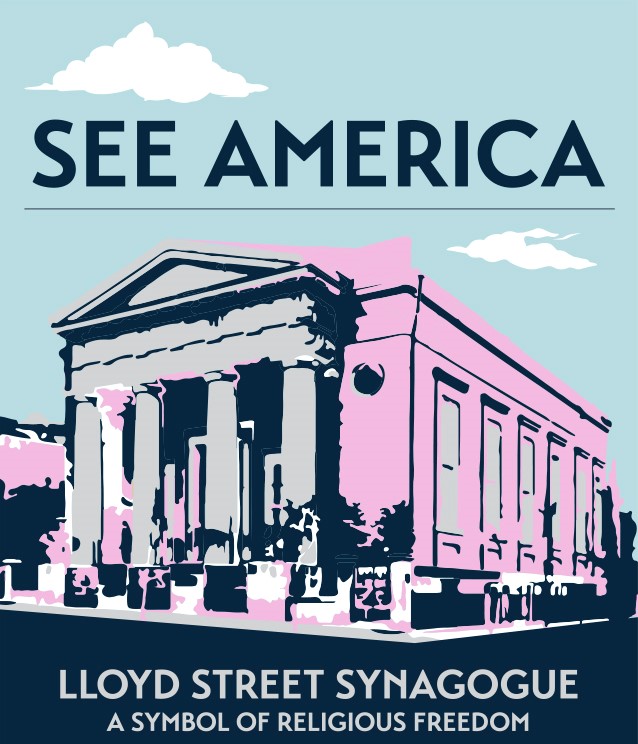History of the Lloyd St Synagogue

When the Lloyd Street Synagogue opened in 1845 it was the first synagogue built in Maryland. Today it is the third oldest standing synagogue in the United States and is listed on the National Register of Historic Places.
Three congregations worshipped in the building:
Baltimore Hebrew Congregation (1845-1889)
St. John the Baptist Lithuanian Catholic Church (1889-1905)
Shomrei Mishmeres Ha-Kodesh (1905-1960)
Though very different from one another, they shared an important characteristic: all three were made up of European immigrants who faced the challenge of adapting to American life while trying to maintain religious traditions rooted in the old country. Each congregation met this challenge in its own way—and in the process, each left its mark on the Lloyd Street Synagogue.
Baltimore Hebrew Congregation (1845-1889)
In 1830 a small group of German-speaking immigrants founded Baltimore’s first Jewish congregation, Nidche Israel (“The scattered of Israel”), later known as Baltimore Hebrew Congregation. Fifteen years later the congregation celebrated the opening of Maryland’s first newly constructed synagogue, a small Greek Revival treasure on Lloyd Street. But the congregants faced complex issues that tested their unity. During the forty-four years they occupied the Lloyd Street Synagogue, they altered the building in ways that reflected their ongoing struggle to forge an American Judaism that served both their American and Jewish identities.
St. John the Baptist Lithuanian Catholic Church (1889-1905)
The first Lithuanian Catholic immigrants settled in Baltimore around 1880. Proud of their Lithuanian heritage, they were determined to establish a church of their own. After winning approval from the Archdiocese, they formed St. John the Baptist Lithuanian Catholic Church and purchased the Lloyd Street Synagogue from Baltimore Hebrew Congregation. Their many alterations to the structure included adding a bell tower. The church occupied the building only sixteen years, but during this brief period, St. John’s established the Lithuanian community as a distinctive part of Baltimore’s ethnic mosaic.
Shomrei Mishmeres Ha-Kodesh (1905-1960)
During the 1890s the area around the Lloyd Street Synagogue became an East European Jewish immigrant enclave with many small synagogues (or “shuls”). Yet the neighborhood’s most historic synagogue building served as a Catholic church. When St. John’s decided to move out, members of one neighborhood shul—Shomrei Mishmeres Ha-Kodesh—seized the opportunity to restore the building to its original purpose. They purchased it and reconverted it into a house of Jewish worship. Shomrei Mishmeres thrived for three decades as a bastion of traditional Judaism in a rapidly changing society.
As Jews moved out of East Baltimore in the mid-twentieth century, the Lloyd Street Synagogue fell into disrepair. The Jewish Historical Society of Maryland was created to save the building from destruction. Its leaders sought to restore the historic landmark and transform it into “a great educational and historical center of the people.” The graceful old synagogue continues to fulfill that mission to this day, as an integral part of the campus of the Society’s successor organization, the Jewish Museum of Maryland.
Interested in exploring more stories about the Lloyd Street Synagogue or taking a tour? Visit our Synagogue Stories page.
B’nai Israel Synagogue
Interested in learning about the other synagogue on JMM’s campus? Click here.
